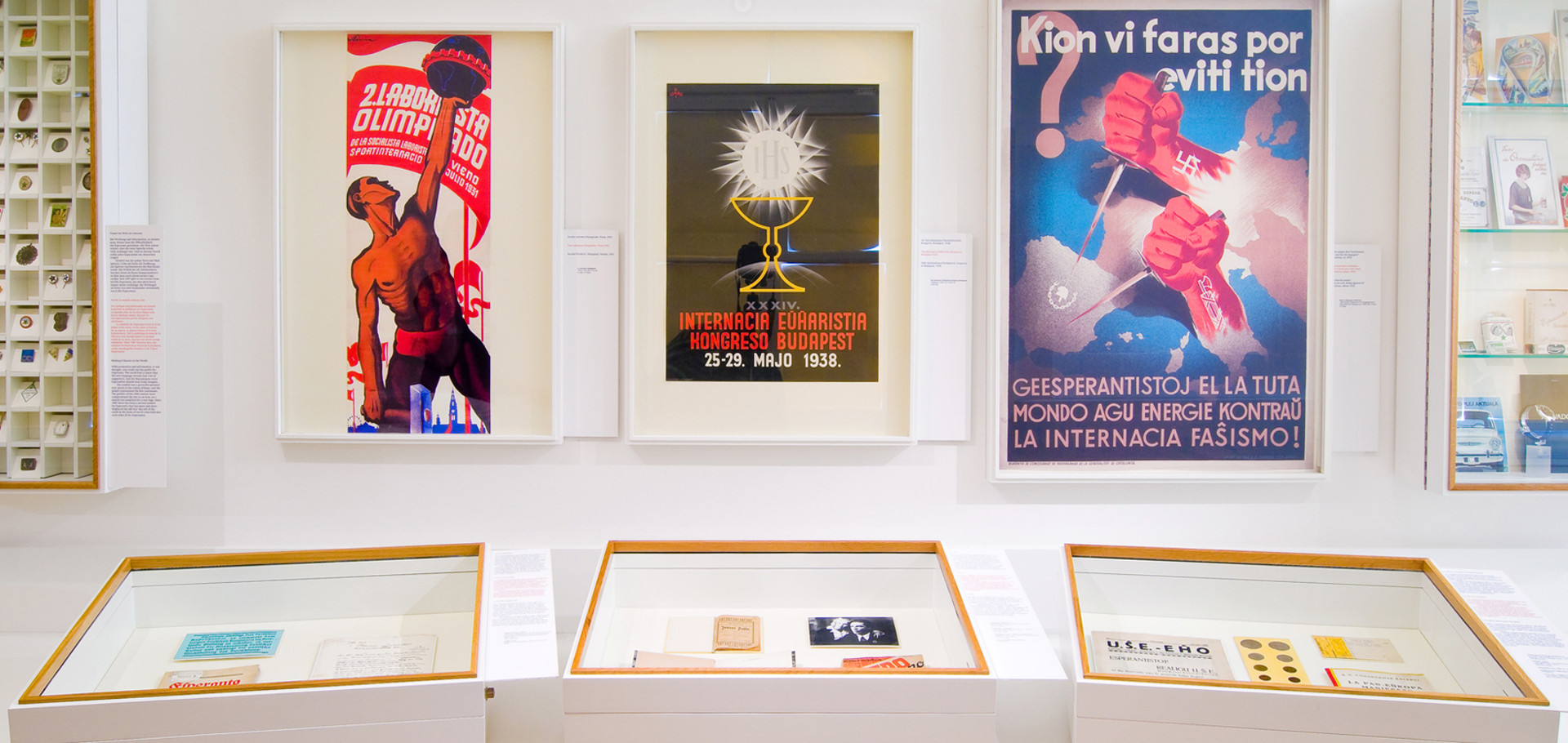Dive into the world of planned languages

In an innovatively designed permanent exhibition in Palais Mollard, we present to you the eventful history of Esperanto, along with a whole host of other planned languages, giving you an insight into an interesting field of linguistic creativity.
Your visit to the Esperanto Museum
Watch a short film to start your visit to the museum and get an overview of the history, grammar and current use of the language of Esperanto. A BBC video course provides an impression of what Esperanto sounds like.
A wealth of languages
Experience the diversity of languages and familiarise yourself with the most well-known planned languages of Volapük, Ido and Interlingua through audiovisual media. The Esperanto Museum also introduces you to various projects such as the mystical language of Lingua Ignota by Hildegard of Bingen (1098-1179), the musical language Solresol, the joke language Starckdeutsch or Klingon from the TV series Star Trek.
Esperanto from 1887 to today
At the heart of the exhibition is the most successful planned language: Esperanto. Interactive media stations, major publications, objects, posters and archive records provide an impressive overview of the extent and varied use of the language, from the publication of the Unua Libro in 1887 to the production of literature and the Esperanto World Congress today.
Natural languages and language planning
Embark on a journey through the history of languages and discover that even natural languages are subject to a certain degree of planning and standardisation – particularly when it comes to vocabulary. Language invention and deliberate language design are thus not just peripheral phenomena but rather decisive factors of how humans relate to language.
